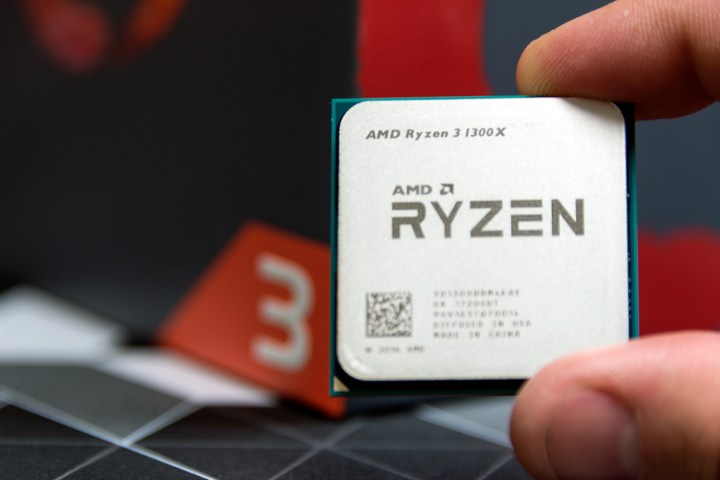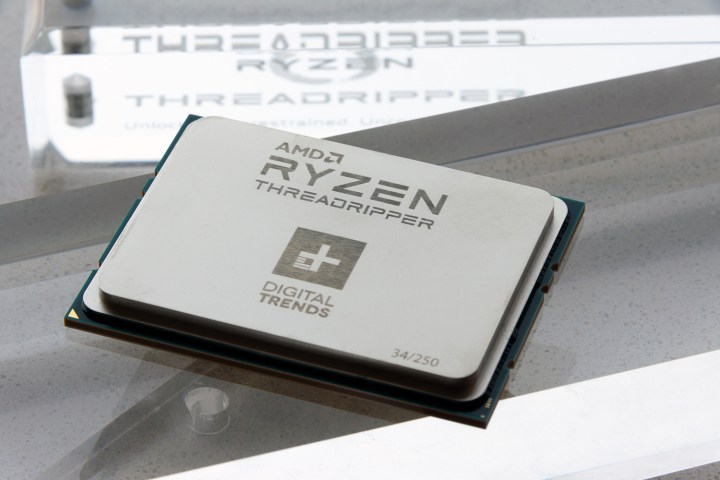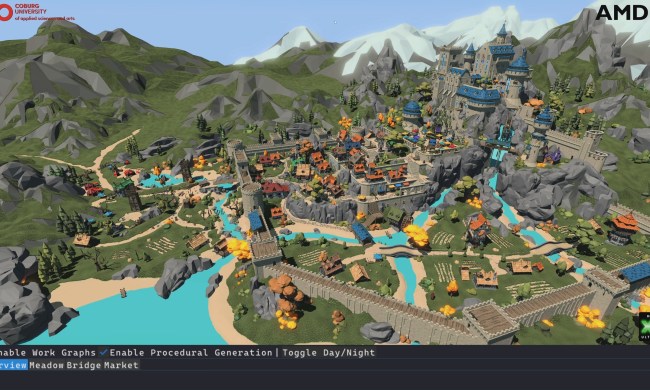
But that’s not to say its lineup is any more simple. On top of having powerful gaming and multitasking processors throughout the price/performance spectrum, AMD also has a solid offering of Accelerated Processing Units, or APUs, that deliver great graphics and CPU power on one die. It even teamed up with Intel in recent months for a unique competitor for Nvidia’s discrete graphics offerings.
In this guide, we’ll walk you through the various configurations of AMD processors, what they’re good for and why they’ve given the competition something to worry about for the first time in a long time.
Wondering which AMD CPU is right for you? Check out our Ryzen buying guide.
New blood
Ryzen CPUs

The poster child for the real resurgence AMD experienced in 2017, Ryzen CPUs, based on AMD’s Zen architecture, have proved a force to be reckoned with. They threw down the gauntlet at Intel’s feet in a big way and forced the chip giant to respond in ways we haven’t seen since AMD’s Athlon 64+ chips pushed Intel to move beyond its Pentium 4s.
Although Ryzen chips still tend to fall behind their Intel counterparts in single-threaded performance — and indeed, some games — the multithreaded power of Ryzen chips can be streaks ahead of the competition. They introduced hexacores to the mid-range, with multithreaded support throughout, while the top chips are octacores with a full 16 threads. Xtended Frequency Range (XFR) automated overclocking helps bolster clock speeds to more than 4GHz on some chips, and for those who want to go further, they all have unlocked multipliers without paying for the privilege as is the case with Intel chips.
Prices range between $100 and $400 depending on the performance required and if you want even more, there’s always Threadripper.
Threadripper

If Ryzen CPUs were AMD nipping at the heels of Intel’s Core i5 and i7 CPUs, Threadripper took a full bite of even its Core i9 Extreme Edition chips. Threadripper are Ryzen CPUs taken to the next logical step and it’s a big one, quite literally. Measuring in at 3.1 x 2.2 x .03 inches, Threadripper chips are some of the largest consumer CPUs ever released.
All of that size equates to big performance, with even the weakest of the lineup, the 1900X, packing eight cores and 16 threads under its hood. Look to the 1920X or even the 1950x though, and you’re faced with 12 cores/24 threads and 16 cores/32 threads respectively.
Clock speeds on these chips hit 4.2GHz with XFR enabled and with up to 32MB of level three cache and a full 64 PCIExpress lanes across the range, they show what the true power of Zen hardware is capable of. Once again they are a little weaker on the single-threaded side of the processing coin, but as more software integrates greater support for multiple threads, that will become less relevant over time.
The real kicker when it comes to the Threadripper though, is in the pricing. Comparable Intel Core i9 Extreme processors cost well north of $1,000 and in some cases close to $2,000. Threadripper on the other hand, tops out at $1,000 and can be had for as little as $480.
Kaby Lake G

A unique entry in AMD’s lineup of hardware, Kaby Lake G chips are actually a construction of both AMD and Intel together. Although at the time of writing they aren’t available for performance tests, the unique combination of an Intel CPU with an AMD graphics chip on the same die, paired with second-generation high-bandwidth memory (HBM2) has tongues wagging.
Performance isn’t expected to be world-beating, but it could offer real competition for Nvidia in ultra-light
Old guard
FX CPUs

All of the FX chips run at high wattage (95-220 watts) on the AM3+ socket, with speeds ranging from 3.8GHz for the FX 4100 to as high as 5GHz for the FX 9590. L2 cache ranges from 4MB to 8MB.
Athlon CPUs

You’re unlikely to come across Athlon chips in any new desktop systems, as there are far better alternatives out there if you’re buying new. Second-hand systems may sport an Athlon X4 (quad-core) or Athlon X2 (dual-core) operating anywhere up to 4.2GHz with up to 4MB of level two cache.
What about APUs?
AMD’s acquisition of graphics card manufacturer ATI in 2006 boosted the company’s ability to produce and innovate in graphics hardware. While it fell behind rivals Intel in terms of CPU power, the integration of its own graphics chips with its CPUs to form APUs meant that it could compete in the more small-form-factor spaces.
As such, APUs are often intended for smaller and more energy-efficient machines.
Ryzen Mobile with Vega

The newest entry in AMD’s APU range, Ryzen Mobile with Vega chips were officially released in January 2018. However, they made their debut a few months earlier with the HP Envy x2 which sports the 2500U with Vega 8 graphics, performing very favorably in benchmarks. It showed that a Ryzen CPU with Vega graphics processor (GPU) on the same die can offer performance comparable to an Intel/Nvidia combo with far greater gains in energy efficiency and better pricing.
With higher and lower-end versions of these chips released in January 2018, AMD’s Ryzen Mobile with Vega could prove to be a solid choice for single-chip performance in entry-level gaming and ultra-small-form-factor systems.
A-Series APUs

Throughout the line up, CPU cores range from two to four and GPU cores from two to eight. Clock speeds for the CPU cores go as high as 4.3GHz, though most, even the last releases in mid-2017, don’t go that high. These APUs can’t handle the latest games at high detail settings, but they can play most titles at low-to-medium detail and 1080p resolution.
Buying one today is growing increasingly difficult as AMD shifts its focus to new Ryzen APUs. If you’re dead set on one, make sure to shop around to find the best deal.
Athlon APUs

Although capable in their day, this ageing architecture falls far behind the capabilities of more modern hardware.
Older product lines
Please note that older AMD CPU lines, like the Sempron and Phenom II series, have been left off of this list as they are no longer sold at most retailers. If you’d like to compare AMD APU and CPU chips directly across product lines and ranges, the company offers a master list of all its chips on its website.
Updated 01/15/2018 by Jon Martindale with Ryzen, Threadripper, Kaby Lake G, and Ryzen on Mobile sections. Deleted some legacy chip descriptions.




